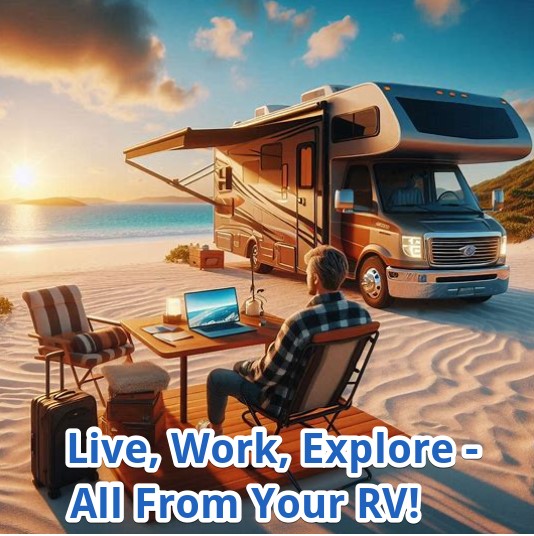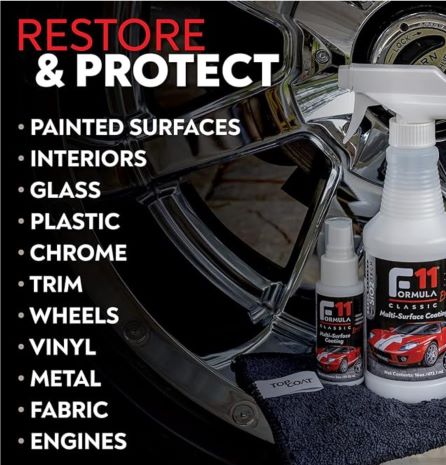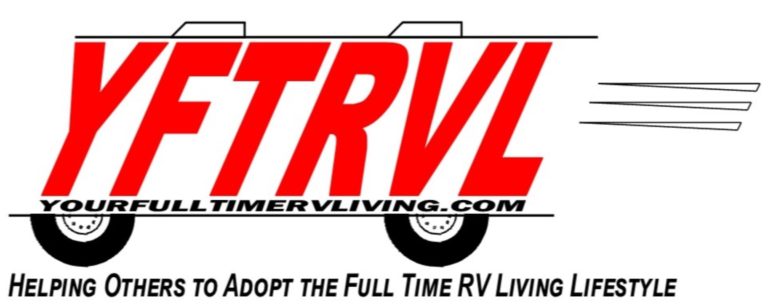If you’re a boondocker, you already know life off-grid can be really rewarding. The quiet, open spaces and starry skies are hard to beat. But staying connected, whether you need to check emails, keep up with family, work remotely, or keep yourself entertained can become tricky the further you get from towns and cell towers.
I’ve tested a bunch of methods in my travels, and I’m happy to share what works well when you want reliable internet while camping in the wilds.
Staying Connected Offgrid: The Basics
Connectivity in remote places isn’t always straightforward. Cell coverage can drop to zero, WiFi signals may not even exist, and the weather can change everything. A lot of campers use a mix of tech to get online, since one method alone rarely does the job. Mobile internet works pretty well in areas with coverage, but sometimes you need satellite or radio-based tools to fill the gaps.
Many folks just starting out in boondocking are surprised by the options available today. You have cellular hotspots, dedicated boosters, long range WiFi gear, and high powered satellite solutions. With a few basics in place, it’s easier to set up your digital life, no matter how far out you find yourself.
Technology changes constantly, so keeping up with the latest gear makes a big difference. I always recommend having backup plans for the internet, especially if you rely on it for work. Even in national forests or desert valleys, a smart tech setup keeps you in touch.
Main Ways To Get Internet While Boondocking
There isn’t one “right” way to get online in the boonies, but I’ve found these to be the main options most people use:
- Cellular Data (Mobile Hotspots): Cellular data is often the simplest way to get connected, especially in areas with at least a decent phone signal. Most people use their phones or buy dedicated mobile hotspots that can connect multiple devices.
- Signal Boosters: Boosters turn up weak cellular signals, making it possible to get online in more places. Some options are as small as a portable phone case, others require an external antenna mounted on your roof or window.
- Satellite Internet: Satellite works almost anywhere you have a clear view of the sky. Companies like Starlink now provide decent speeds for RVers willing to pay a bit more and set up a dish.
- Long range WiFi Extenders: In some paid campsites or public spots, you can sometimes grab WiFi from a distant building by using an external, high gain antenna.
- Public WiFi: If all else fails, stopping at a coffee shop, library, or visitor center is sometimes the only option for a strong connection.
People usually combine two or even three of these options to get the right setup for their travel style and budget. That way, you’re not left completely offline if a storm knocks out local cell service, or you end up further from civilization than planned.
Choosing the Right Gear
Before buying your first mobile internet gadgets, there are a few things to check out. Not all gear is created equal. Some products work better for long stays, others are designed for nomads constantly on the move.
I always recommend checking your most common travel areas to see which cell carriers offer the best coverage. There are coverage maps online that help figure this out without too much guesswork. Getting a data plan from the carrier with the strongest service in your favorite spots usually pays off.
For gear, I look for devices that work well with solar power setups, use as little energy as possible, and are tough enough to handle some bumps on dusty back roads. I also like tools that let you quickly reboot or reset the connection if things get glitchy. Swapping SIM cards or moving antennas often solves a lot of headaches, so user friendly gear is worth a few extra bucks.
Quick Start Guide: Setting Up Internet for Boondocking
Getting your boondocking internet setup running can feel overwhelming at first, but breaking it down helps a lot. Here’s how I tackle it step by step:
- Pick a Main Internet Source: Choose cell data with your phone, a separate hotspot, or a portable satellite system. If you’ll spend time in managed campgrounds, a long range WiFi antenna can be a handy backup.
- Test Your Signal: Use free apps like OpenSignal or Coverage to check carrier signals. Stand outside, not inside your RV, when testing, because the vehicle walls block weak signals.
- Set Up a Signal Booster: Mount the external antenna on the roof or somewhere high, then connect it to your booster device inside. Many people use suction cups or brackets for easy removal between campsites.
- Configure Your Devices: Create a simple local network with your hotspot or router. Set a secure password so neighbors don’t piggyback on your data. Make sure your antennas and boosters get power from your house batteries or a solar setup.
- Backup Your Plan: If you rely on the internet for work, consider a spare SIM card with a different carrier, or even occasional satellite access. You do not want to be stuck if your favorite carrier’s tower is offline for repairs.
Mix and match to suit your needs. With this plan, you can usually get online enough for maps, weather checks, and streaming, as long as you’re not trying to download whole seasons of shows all at once.
Things To Consider Before Choosing Your Setup
There are a few main challenges people run into when setting up remote connectivity:
- Coverage: There are still places without any cell signal. Coverage changes in the hills, valleys, forests, and deserts, so flexibility is super important.
- Power Usage: Off grid gear needs to be energy efficient. Even the best tech drains batteries if left running all day. Solar power helps, but I always turn off devices overnight.
- Weather: Storms and clouds can affect both cell signal and satellite systems. Snow on your dish, or heavy rain, might cause a temporary outage. I carry a microfiber towel for quick dish cleaning.
- Tech Support and Updates: In the wild, offline gear updates or awkward tech support calls can get frustrating. I download any new firmware or app updates before heading out.
- Budget: Some boondockers are happy using just free WiFi in town, while others spend more for fast, always available connections. Spending a bit more up front for good antennas and boosters usually pays off by letting you camp in more beautiful locations.
Power Management for Your Internet Gear
One area lots of newcomers overlook is how much electricity their gadgets use. Mobile hotspots and signal boosters can run all day on a small power bank, but satellite dishes often demand more juice. Having a beefy battery bank and a couple of solid solar panels keeps you going, even in cloudier weather. I like to keep a spare set of cables, solar charge controllers, and a backup USB battery pack on hand at all times.
How I Handle Internet Gaps
No matter how well you plan, there will still be dead spots or times when the internet gets painfully slow. I usually download offline maps and entertainment before heading way out. Sometimes, I’ll schedule video calls or work tasks for days I plan to travel through places with good cell service. Patience is part of the deal, but having offline resources ready makes everything feel less stressful.
Advanced Tips for Reliable Connection
I get a lot of questions from friends and fellow RVers about keeping connections up in tough spots. Here are my top tips:
Try Multiple Carriers: Pick up prepaid SIM cards or hotspots from more than one provider if you can swing it. Sometimes Verizon works in the mountains, T-Mobile works better near highways, and AT&T fills in the gaps.
Set Up a High Gain Antenna: Swapping out a basic antenna for a high gain or directional one can mean the difference between no bars and enough to watch YouTube. Mount it as high as possible and experiment to find the sweet spot.
Monitor Data Usage: Mobile and satellite data plans can get pricey if you burn through your quota fast. Limit big downloads and streaming if you notice your usage spiking.
Keep Devices Up To Date: Before heading out, make sure your devices have the latest updates. Better security and performance save headaches when you’re away from tech support.
Have a Backup Plan: Always keep a way to contact someone in the event of emergencies, even if it’s just a basic satellite messenger. No internet isn’t fun, but no way to call for help is much worse in a true pinch.
Frequently Asked Questions
Here are a few questions people ask me all the time about boondocking and staying connected:
Question: Will my phone’s hotspot work in any remote spot?
Answer: Not everywhere. Phone hotspots only work where there’s cell service. A signal booster can help in weak areas, but when you’re miles from the nearest tower, satellite internet is your best bet.
Question: Is satellite internet fast enough for streaming?
Answer: Satellite internet like Starlink is surprisingly quick, especially compared to older satellite options. You can stream shows, but weather and network congestion might slow things down at certain times. This is our top choice!
Question: What’s the most affordable way to stay online while boondocking?
Answer: Using free WiFi at libraries and public places costs nothing, but it isn’t always convenient. A basic cell hotspot on a flexible prepaid plan gives you a solid balance of cost and reliability for most trips.
Question: Are there safety risks if I have no connection?
Answer: Yes, being totally off grid without a way to reach help creates risk in case of medical or vehicle emergencies. Carry a basic satellite communicator or personal locator beacon as a safety net.
Staying Connected: Final Thoughts
Keeping a strong internet signal while boondocking helps you enjoy the remote lifestyle for longer stretches. A solid tech setup also brings peace of mind, knowing you can call home, check the weather, and handle work tasks even on the quietest nights. With the right balance of mobile, satellite, and WiFi tools, you can get out into nature without feeling cut off from the world.
Safe travels and happy connecting! If you want to learn more about travel tech, off grid living tips, or just love RV stories, keep exploring the site for my other guides and reviews.
To learn more about us, click here.
Please feel free to ask a question or leave a comment before you read other articles on our website.
Pam and I hope that while you enjoy the RV lifestyle, you also run an online business from your RV! We have since 2014!!
With great RV connectivity, as discussed on this website, you can make money while traveling to whatever destination you desire.
Would you like to create an income while enjoying RV travel?
Is there something that you are passionate about? You can create an online business that you can run anywhere. I can help you do that!














Recent Comments